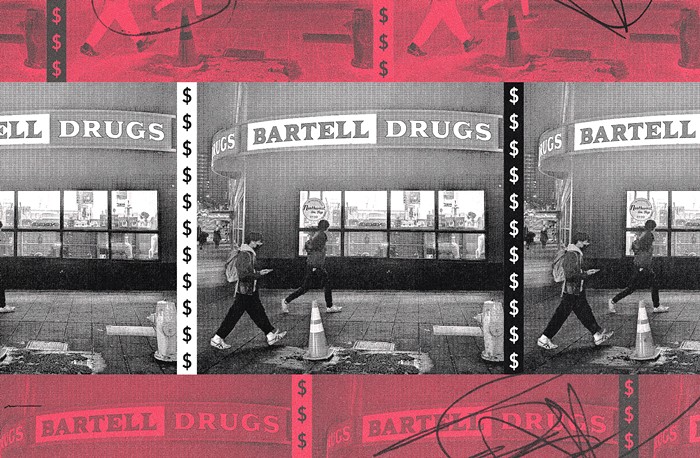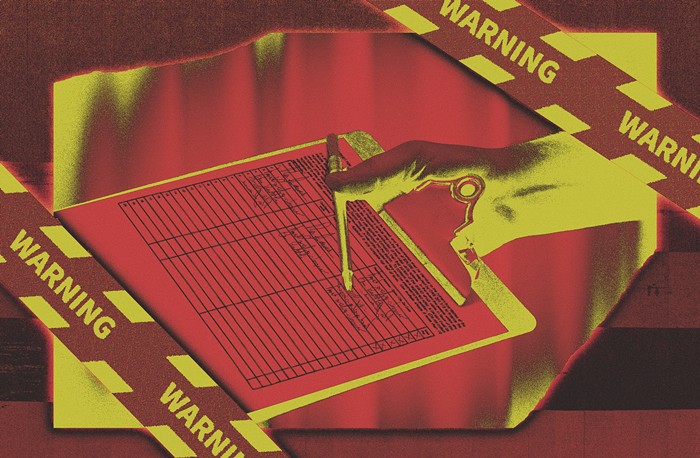
Today, on National Gun Violence Day, Mayor Ed Murray, Seattle's police chief, and four city council members unveiled an initiative to install gunshot detection technology known as ShotSpotter in the Central District and Rainier Valley. But influential privacy advocates are doubtful about the plan.
Here's how it's supposed to work: Audio sensors pick up the sound of a given gunshot, swiftly triangulate the location, activate cameras, and transmit the information to police. Officials say it will help police catch shooters and deter crime. The technology would be purchased using money from a federal grant.
The nine-member city council will need to approve the initiative before any system is installed. Murray said he is sensitive to concerns about racial equity and privacy—officials will use the race and social justice toolkit in assessing the pilot program.
"If the neighborhoods most affected aren't interested in it, we won't be proceeding with it," Murray promised.

Council President Bruce Harrell has long been a fan of the technology and he believes his constituents in South Seattle are hungry for it. "We are standing in a part of Seattle that has been traumatized... by this senseless gun violence," he said. Council Members Lorena González, Sally Bagshaw, and Tim Burgess added their support for the initiative. Murray said the majority of gun violence victims in Seattle are African-American.
Harrell talked about two young black men he knew: Reese Ali, 21, and Robert Robertson, 17, both gunned down last year in Renton and Beacon Hill, respectively.
Police chief Kathleen O'Toole cited New York City's police department, which has expanded its use of ShotSpotter in recent years, as a model for how Seattle can use the technology. "I saw a presentation recently by the NYPD [about ShotSpotter] that was absolutely phenomenal," she said.
But Seattle is not New York City. Harrell and former mayor Mike McGinn considered ShotSpotter back in 2012, but plans for the program were quietly shelved late that year. During that period, civil liberties groups led an outcry that ultimately pushed the SPD to abandon its plan for a drone fleet. This was a lesson for the city: Seattle residents tend to be deeply suspicious of surveillance technology.
ACLU of Washington Technology and Liberty Director Shankar Narayan said he has not yet seen details of the latest ShotSpotter proposal, but expressed reservations. "Will this system integrate with others," he asked, "such as body cameras and license plate readers, to create an ever more inescapable net of government surveillance?"
The Seattle Privacy Coalition was more blunt: "ShotSpotter is snake-oil," the group said in a statement. "There's no scientific proof it reduces crime... Instead of planting microphones all over crime-ridden neighborhoods, use the money for community policing and diversion programs like LEAD."
ShotSpotter is offered by SST, Inc., a company that has aggressively lobbied cities to adopt the technology. The Center for Investigative Reporting recently examined the system's record in San Francisco:
In practice, police often come up empty-handed because people rarely stick around after firing a gun. And while the technology has been used as evidence in court in a handful of states, it generally plays a minor role for prosecutors and police trying to reduce gun crime...
Reporter Matt Drange takes a closer look at ShotSpotter by digging into thousands of alerts in cities across the country. A clear pattern emerged: lots of calls, few tangible results.
Take San Francisco, for example, where there were more than 3,000 ShotSpotter alerts over a two-and-a-half-year period. Of those, two resulted in arrests. And only one was gun related.


















